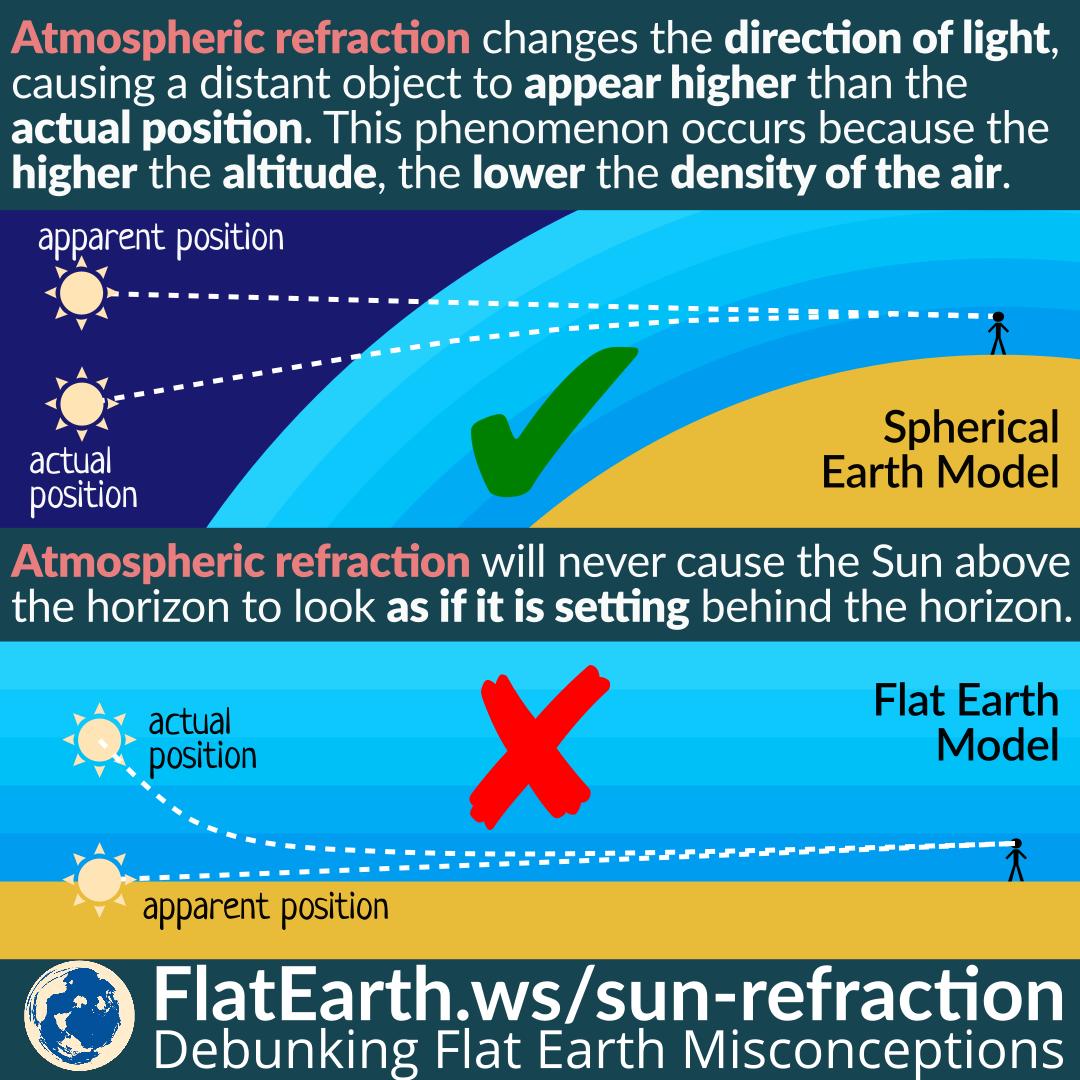If the Earth is flat, then the Sun would have been visible from the entire Earth, but that’s not the reality. So, to rescue the concept of the flat-Earth from being falsified, they invented an ad-hoc hypothesis that the Sun appears to set because of perspective and refraction.
Atmospheric refraction occurs because the higher the altitude, the lower the density of the air is. Because of the varying density, a light parallel to the ground will curve along the curvature of the Earth. This phenomenon cannot be explained in the flat-Earth model where they need refraction to bend to the other direction. In turn, they would need the density profile of the atmosphere to be reversed: the higher the altitude, the higher the density. This obviously is not in line with reality.
Another problem with the flat-Earth model is the amount of refraction. Atmospheric refraction only causes a shift of about 0.57°. This means the Sun is still visible even though physically it is already 0.57° below the horizon. The flat-Earth model would require a much more significant amount of refraction, and to the other direction.
And those aren’t all. Even if atmospheric refraction behaves like they want it to, they still need to explain why a sunset has a clearly defined boundary between the obstructed part and the visible part of the Sun. And at the same time, the ground is practically unaffected by refraction at all. No, it is not possible the Sun above the horizon to appear to set behind the horizon.
All this time, both refraction and perspective are abused by flat-Earthers as technobabble. Two sophisticated scientific-sounding terms along with the related “demonstration” are being used to dazzle the unsuspecting crowd. In reality, both cannot explain the everyday phenomenon of sunrise and sunset in the flat-Earth model. Not even close.
Reference
- Atmospheric refraction – Wikipedia


